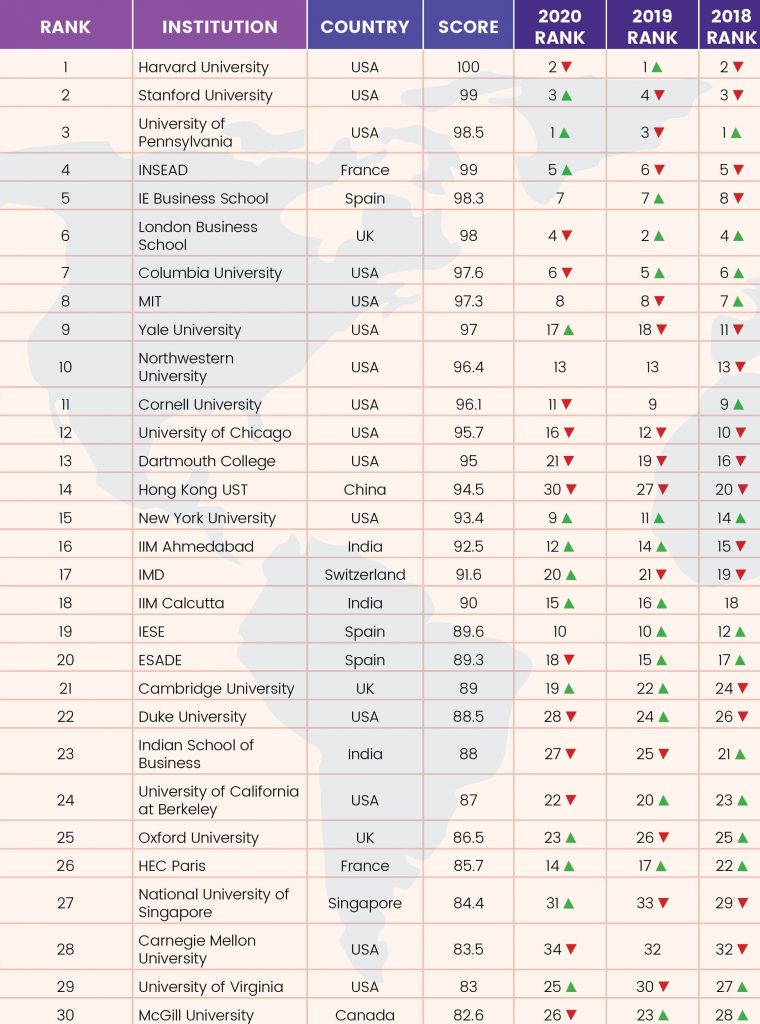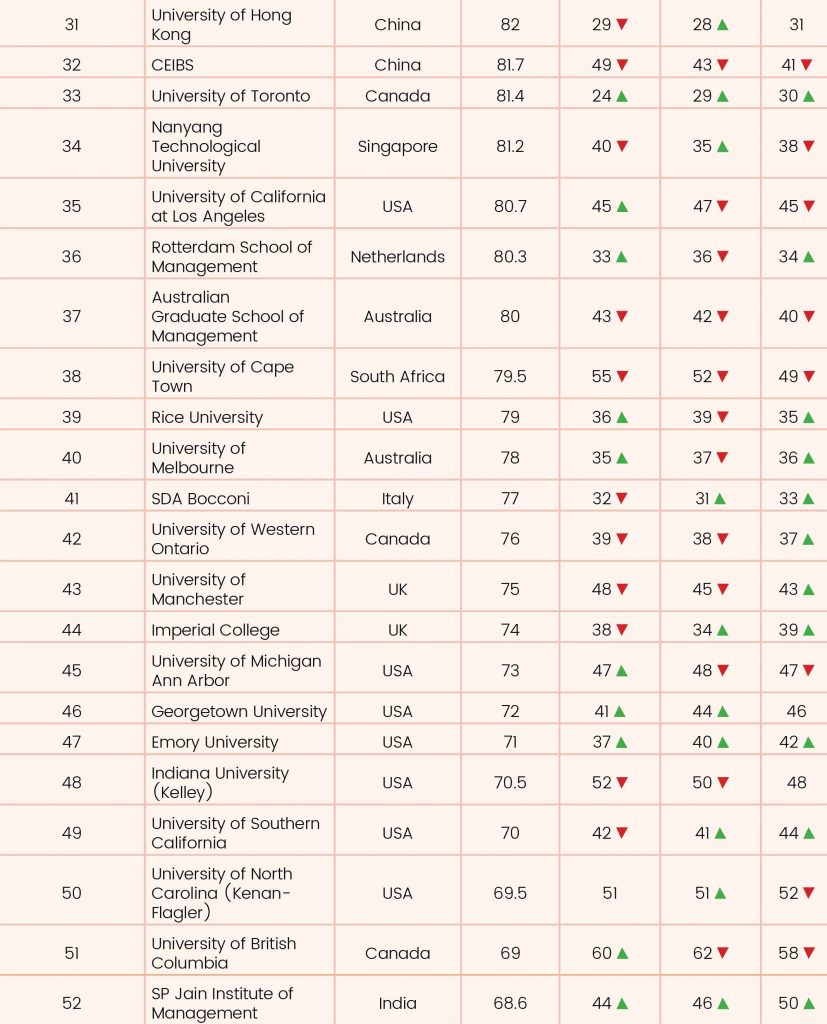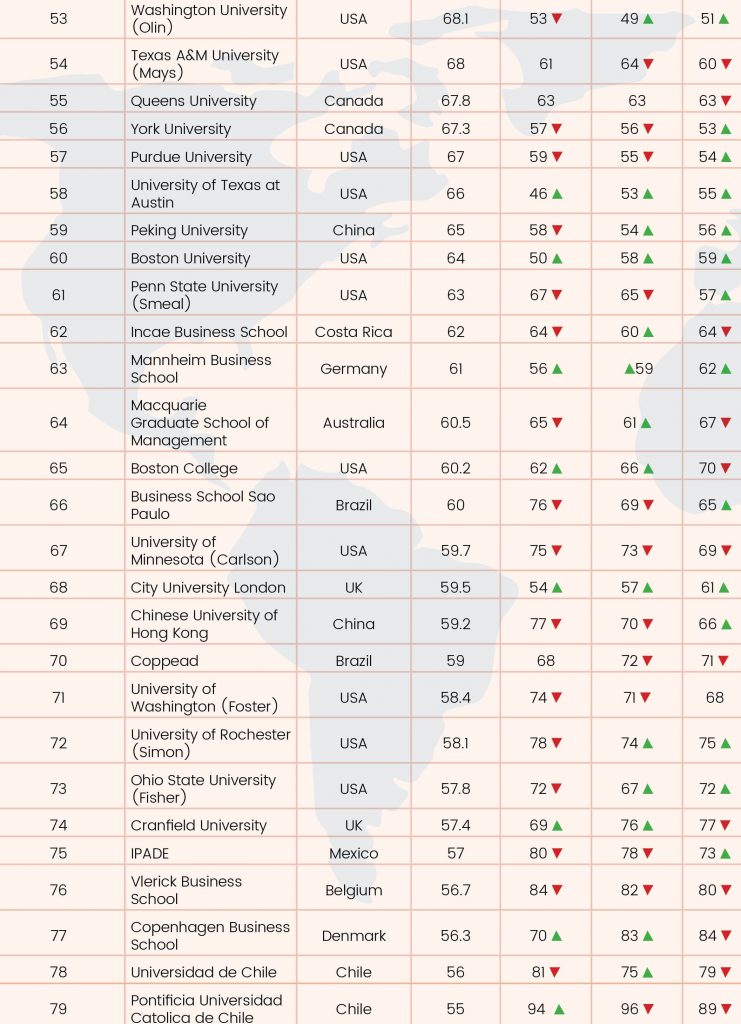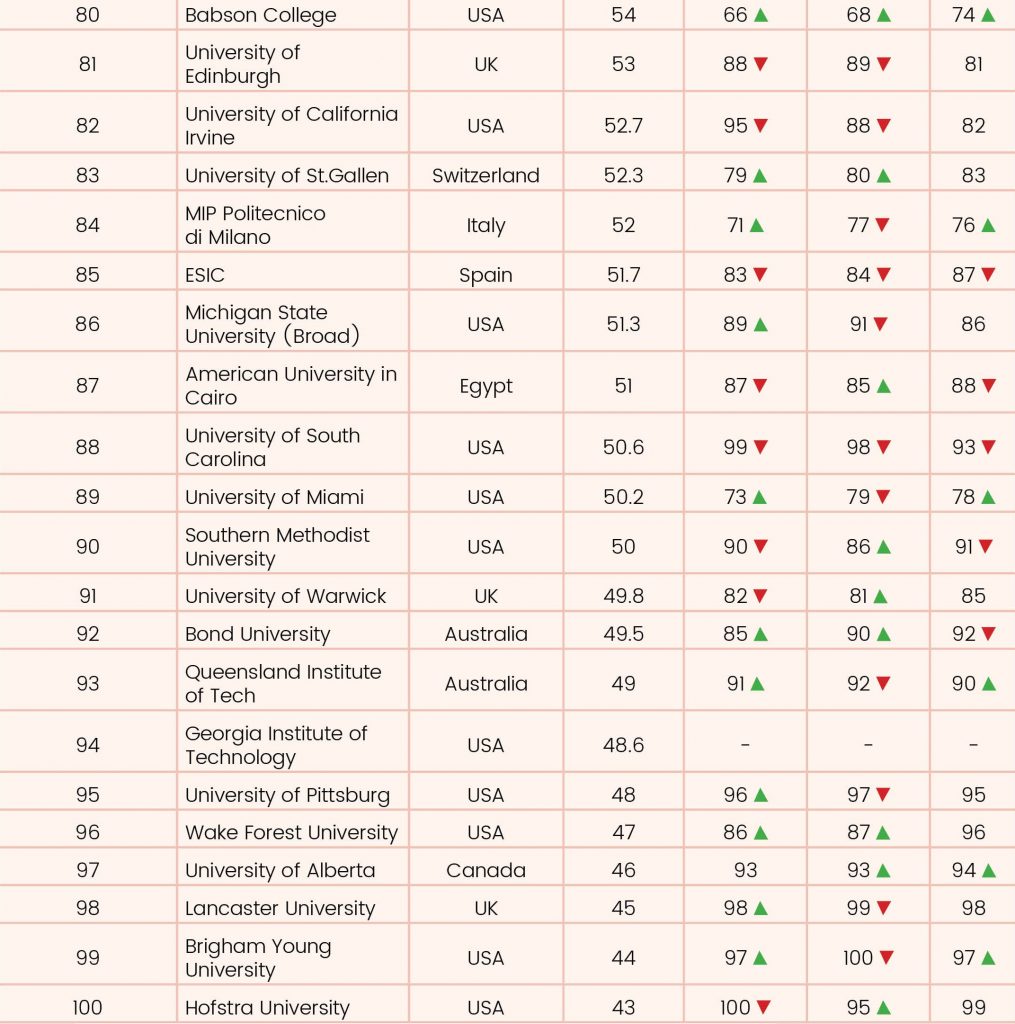The entire world has had a tumultuous year in 2020. With months of lockdown, every sector across the world saw the face of crackdowns. Needless to say that businesses were the worst affected. However, it is important to note that these challenging times led to a breakthrough of newer opportunities and methods of working. The way people carry out businesses today has largely evolved making the competition for aspiring entrepreneurs even more competitive than ever. Mindful strategizing and the ability to adapt to the ever-evolving business culture is paramount in the current situation to place yourself ahead of the rest. To master this, pursuing the right kind of education is vital.
As the pandemic still exists, everything appears hazy. Moreover, the demand for careers in the field of Business, Finance, Marketing, Management, or Economics is at an all-time high. This said, circling in on the best business school out of the many in the world, that make you business-ready also becomes nerving. To rescue you from these added efforts, we at Youth Incorporated, one of India’s youth magazines in association with Education Times, have come up with our annual Global B-School Rankings 2021 under which we have compiled a list of the top 100 B-Schools across the globe which are best to graduate from.
Our team connected with 1900 institutes and held discussions with students, recruiters, and the teaching faculty, to present to you the top 100 Global B-School Rankings. We also consulted professional organizations such as AMBA, EQUIS, and AACSB. Youth Incorporated’s Research Unit (YRU) also studied domestic rankings in various countries to find the best institutes.
According to the Global Business School Rankings of 2021, Harvard University stands in the first position becoming the best business school in the world. Followed by this are Stanford University and the University of Pennsylvania winning the 2nd and 3rd positions respectively. While the University of Pennsylvania has slipped down from the first rank in 2020 to the third, Stanford University has jumped from the third position to the second. Climbing up the ladder one step higher, INSEAD has gained the 4th position leaving its 5th position to be acquired by IE Business School which stood on the 7th rank in 2020. Descending from its fourth position, the London Business School now stands on the 6th in the list followed by Columbia University ranking 7th. MIT has maintained its position being the 8th on the list since 2020. On the other hand, Yale University and Northwestern University have taken a big jump and successfully made their way into the top 10 business schools in the world by securing their place on the 9th and 10th spot respectively from the 17th and 13th position in 2020. Just like the previous years, this year too, the USA has dominated the top 10 category followed by France, Spain, and the UK.
India too has fairly maintained its position with IIM Ahmedabad and IIM Calcutta falling under the top 20. However, both of them have slipped further down in the rank with IIM Ahmedabad ranking 16th as opposed to its 12th rank in 2020, and IIM Calcutta ranking 18th in 2021 instead of its 15th position last year. A total of 4 Indian business schools ranked in the Global B-School Rankings 2021 with the Indian School of Business ranking 23rd and the SP Jain Institute of Management ranking 52nd on the list. Given the kind of potential India holds, a little disappointment came along with the downward shift of the Indian B-schools on the list. Let’s hope we see a positive change in this in 2022.




Ranking Methodology
How did we choose institutes?
We chose 1900 institutes across the world after having discussions with students, recruiters and faculty. We also consulted professional organizations such as AMBA, EQUIS and AACSB. Youth Inc’s Research Unit (YRU) also studied domestic rankings in various countries to find the best institutes.
All the institutes were sent identical surveys. We then contacted current students, alumni as well as local and international recruiters and gathered specific information about the institutes.
Factors considered
- Recruiter Perception – Identical surveys were sent to recruiters worldwide. The recruiters were asked to rate the institutes that they were most likely to recruit from. The recruiters were also asked to rate the students they have recruited from specific business schools on several criteria including leadership potential and strategic thinking.
- Diversity of Students – The institutes were asked to report the total number of students on campus and what percentage of the students were international and speak two or more languages. Gender diversity of the students was also considered.
- Diversity of Faculty – The institutes were asked to report the total number of faculty on campus and what percentage of the faculty was international, hold a doctorate degree and accredited with their own publishing material. Gender diversity of faculty was also considered.
- Innovation of Programs – We considered the different ways to construct degree programs, as well as the choice students, have in terms of selecting electives.
- Innovation in Teaching Methodologies – Institutes were asked to select different teaching methodologies that we considered innovative. Some of these included company visits, dual or multiple majors and course collaborations between different departments at the institute. Our list was selected after surveying students across different campuses worldwide.
- Value for Money – We considered students and alumni opinions on whether a particular institute was perceived as ‘value for money’. We also asked institutes to state the percentage of students who received some sort of funding from the institutes.
- Campus Support – We asked the institutes, current students and alumni to select the different types of assistance provided by the student office or a similar body on campus. Our list was selected after surveying students across different campuses worldwide.
- Career Service – We asked the institutes, current students and alumni about the availability and functioning of a career service cell and how active such a service was for the students. We also considered what percentage of students were actually placed through the institute’s career service cell, how long it look for such placements and what the average starting salaries were.
- Exchange Programs – Institutes were asked to report the percentage of students that opted for exchange programs. We also considered the exchange students present on the institute’s campus.
- Student Satisfaction – Current students and alumni were asked to rate their institutes on various factors including career services, attitude of staff and professors, location, and course content.
Actual Methodology
We sent invitations to 1900 institutes. Institutes were provided a password using which they could send us their completed survey online. They were asked to answer questions relating to full time faculty, career service, student and program information and all the factors listed above.
We contacted current students and alumni of the institutes and asked them to rate specific statements which were pertaining to the factors we considered in this rankings. All the institutes preferred to send the survey links to their students and alumni directly.
17900 recruiters were sent emails with a survey. The recruiter list was prepared from the responses of the institutes and also included internationally well known recruiters. The recruiters were asked to enlist institutes that they were likely to recruit from.
Below is a summary of the factors and the weight-age given to each factor when we ranked the institutes:
| Information reported by the institute | Information reported by current students | Information reported by alumni | |
| Diversity of Students | 2% | 2% | 2% |
| Diversity of Faculty | 2% | 2% | 2% |
| Innovation of Programs | 2% | 2% | 2% |
| Innovation in Teaching Methodologies | 2% | 2% | 2% |
| Value for Money | 2% | 2% | 2% |
| Campus Support | 2% | 2% | 2% |
| Career Service | 4% | 4% | 4% |
| Exchange Programs | 2% | 2% | 2% |
| Student Satisfaction | 2% | 2% | 2% |
| 20% | 20% | 20% |
| Information reported by recruiters | |
| Recall of institute where to recruit from | 10% |
| Likelihood of recruiting from same institute again | 10% |
| Overall satisfaction with students recruited | 10% |
| Satisfaction with institute career cell | 10% |
| 40% |
Each factor was made up of a set of questions. The total percentage attributed to that factor was based on the average score of the responses multiplied by the assigned weight-age. We then totalled the score from all factors and sorted the scores from highest to lowest. The institute with the highest score was ranked 1st.
Not just numbers!
After we received the total computed scores for the institutes, we subjectively analyzed the data provided by the institutes, current students, alumni and recruiters. If we found discrepancies in the satisfaction scores and the subjective descriptions, we omitted the data.
Institutes that did not fill out the survey reports in time
Out of 1900 institutes that were contacted, 128 institutes did not complete the survey on time or did not respond. We used publicly available information on the institutes to include them in our ranking. We also contacted current students, alumni and recruiters of these institutes and compared the data we received with the data from institutes that did participate.
Special notes
Masters in Finance – The programs include the pre-experience as well as the post-experience Masters programs. The ranking also includes the programs which are recently established.
Masters in Management – Certain Masters of Management programs with specializations are also included in the ranking.
Masters in Marketing – Combination courses of Marketing with communication and other fields are also included in the ranking.
Online MBA – Certain factors such as Campus Support and Exchange Programs were omitted in the factors considered for the ranking.
Executive MBA – Certain factors such as Campus Support and Exchange Programs were omitted in the factors considered for the ranking.
For the above 5 rankings, scores obtained by the institutes were rounded off.






























